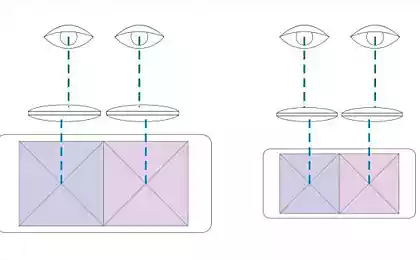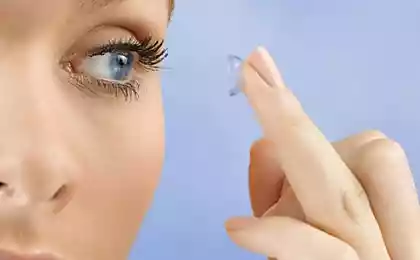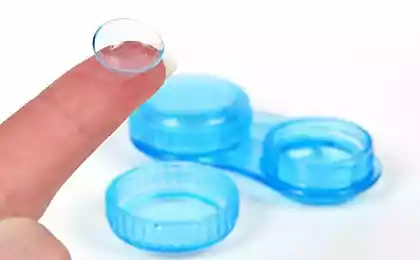372
Divine vision is now available to ordinary people
Imagine that right in your contact lens embedded display with ultra-high resolution. Perhaps in the future it will become a reality thanks to scientists from Oxford University who used the material for storage on a DVD, converting it to a completely new technology to create displays.

In a paper published today in the journal Nature, they claim that their material could become the first generation of the new displays, thinner, light, higher resolution and lower power consumption compared to current technologies.
Such displays can even be flexible or transparent surfaces, expanding their scope from e-books and smartphones to objects, such as car windshields and contact lenses.
The technology is based on the same process as the transformation of water into ice cubes in our fridge. Many substances change their structure with temperature, for example, moving from solid state to liquid, or crystalline to non-crystalline. These materials are now used in a variety of areas, from devices, computer memory, DVD, with the possibility of rewriting to advanced means of isolation of houses.
The team, led by Professor Harish Bhaskaran (Harish Bhaskaran), looking for other ways of applying materials, changing the phase, such as a material of germanium, antimony and tellurium (GST), and found that you can use them to create colorful displays.
They used a single layer of GST few nanometers in thickness and placed it between two ultra-thin layers of a transparent conductor, and the entire structure was mounted on a reflective surface.
The researchers suggested that changing the thickness of one of the transparent layers, they could change the color of the reflected light, and changing the phase of the GST, they could change the color of the material. Then they created a prototype to find out whether the material to change its color from gray to blue when heated.
"We could not believe it. It turned out the first attempt. We tried to repeat this with other colors, and we did it again, says Bhaskaran. – I've been an experimentalist and never seen to work so well at once."
Ivan Shtepa, on materials Discovery.
Source: nauka21vek.ru

In a paper published today in the journal Nature, they claim that their material could become the first generation of the new displays, thinner, light, higher resolution and lower power consumption compared to current technologies.
Such displays can even be flexible or transparent surfaces, expanding their scope from e-books and smartphones to objects, such as car windshields and contact lenses.
The technology is based on the same process as the transformation of water into ice cubes in our fridge. Many substances change their structure with temperature, for example, moving from solid state to liquid, or crystalline to non-crystalline. These materials are now used in a variety of areas, from devices, computer memory, DVD, with the possibility of rewriting to advanced means of isolation of houses.
The team, led by Professor Harish Bhaskaran (Harish Bhaskaran), looking for other ways of applying materials, changing the phase, such as a material of germanium, antimony and tellurium (GST), and found that you can use them to create colorful displays.
They used a single layer of GST few nanometers in thickness and placed it between two ultra-thin layers of a transparent conductor, and the entire structure was mounted on a reflective surface.
The researchers suggested that changing the thickness of one of the transparent layers, they could change the color of the reflected light, and changing the phase of the GST, they could change the color of the material. Then they created a prototype to find out whether the material to change its color from gray to blue when heated.
"We could not believe it. It turned out the first attempt. We tried to repeat this with other colors, and we did it again, says Bhaskaran. – I've been an experimentalist and never seen to work so well at once."
Ivan Shtepa, on materials Discovery.
Source: nauka21vek.ru
























